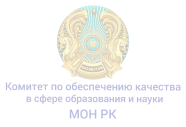«СЕНДЕРДІҢ ДІНДЕРІҢ ӨЗДЕРІҢЕ МЕНІҢ ДІНІМ ӨЗІМЕ ТӘН»: ҚҰРАНДАҒЫ «ӘЛ-КАФИРУН» СҮРЕСІН ЛИНГВИСТИКАЛЫҚ ҚҰРЫЛЫМДЫҚ ЖӘНЕ РИТОРИКАЛЫҚ ТАЛДАУЫ
DOI:
Как цитировать
Аңдатпа
Ұсынылған мақалада Құранның 109-шы сүресін лингвистикалық және дінтанулық негіздерге сүйене отырып зерделеу мақсат етілді. «Аль-Кафирун» сүресі, мәтіндік ықшамдылығына қарамастан, оның пайда болу уақытын контекстуалды талдау үшін өте пайдалы дереккөз болып табылады. Сонымен қатар, аталған сүре Құрандағы барлық мәтінаралық байланыстарға жаңаша көзқараспен қарауға жол ашуы мүмкін деп есептейміз. Өкінішке орай, бұл Сүре көп жағдайда зерттеушілердің назарынан тыс қалып жатады. Осы ретте мақалада әрбір сөздің аудармасын саралауға негізделген коммуникативті әдістер қолданылып, алғашқы ислам қауымдастығының өзге діни қауымдармен, яғни еврейлер және христиандармен болған күрделі қарым-қатынастар көрсетіледі. Сүренің пайда болуының тарихи жағдайы талданып, сол кезде азшылық болған мұсылмандар өздерінің қаупсіздігі үшін айналадағы діни топтармен диалог құру әрекеттері қарастырылды. Зерттеу жұмысы екі аспекті бойынша талданды, атап айтқанда Құранның 109-шы сүресінің ішкі құрылымын зерделеуге бағытталған микро деңгей және өзге сүрелермен мәтінаралық үйлесімділікті қарастыруға мақсатталған макро деңгей назарға алынды.
Түйін сөздер: сүре, Құран, бастапқы ислам, діни топтар, әл-кафирун, Мұхаммед
Библиографические ссылки
Haleem, Abdel Muhammad. The Qur'an: English Translation and Parallel Arabic Text. – New York: Oxford University Press, 2010.
Izutsu, Toshihiko. Ethico-Religious Concepts in the Qur'an. – Montreal: McGill-Queen's University Press, 2002.
McAuliffe, Jane Dammen. The Cambridge Companion to the Qur'an. – New York: Cambridge University Press, 2006.
Newmark, Peter. Approaches to Translation. – Oxford: Pergamon Press, 2001.
Abdel Haleem, Muhammad, and Elsaid M. Badawi. Arabic-English Dictionary of Qur'anic Usage. – Leiden: Brill, 2008.
Sells, Michael. Approaching the Qur'an: The Early Revelations. 2nd ed. – Ashland: White Cloud Press, 1999.
Droge, Arthur J. The Qur'an: A New Annotated Translation. – Bristol: Equinox Publishing Ltd., 2013.
Fischer, Wolfdietrich. A Grammar of Classical Arabic. Translated by Jonathan Rodgers. 3rd ed. – London: Yale University Press, 2002.
Jeffery, Arthur. The Foreign Vocabulary of the Qur'an. – Leiden: Brill, 2007.
Behn, Wolfgang, trans. The History of the Qur'an by Theodor Nöldeke, Friedrich Schwally, Gotthelf Bergsträßer and Otto Pretzl. – Brill, 2013.
Welch, A.T., Paret, R., and Pearson, J.D. Al-Ḳurʾān. In Encyclopaedia of Islam, Second Edition, edited by P. Bearman, Th. Bianquis, C.E. Bosworth, E. van Donzel, W.P. Heinrichs, P.J. Bearman (Volumes X, XI, XII), Th. Bianquis (Volumes X, XI, XII), et al. DOI: http://dx.doi.org/10.1163/1573-3912_islam_COM_0543.
Robinson, Neal. Discovering the Qur'an: A Contemporary Approach to a Veiled Text. – London: SCM Press Ltd., 1996.
Abdul-Raof, Hussein. Qur'an Translation: Discourse, Texture and Exegesis. – London and New York: Routlegde, 2001.
Abdul-Raof, Hussein. Consonance in the Qur'an: A Conceptual, Intertextual and Linguistic Analysis. –Muenchen: Lincum Europe, 2005.
Neuwirth, Angelika. Stuctural, linguistic and literary features // The Cambridge Companion to the Qur'an, edited by Jane Dammen McAuliffe. – New York: Cambridge University Press, 2006. – P. 97-113.
Cuypers, Michel. Composition of the Qur'an, Rhetorical Analysis. – London: Bloomsbury Publishing, 2015.
Hoffmann, Thomas. The Poetic Qur'an: Studies on Qur'anic Poeticity. – Wiesbaden: Otto Harrassowitz GmbH & Co. KG, 2007.
Gwynne, Rosalind Ward. Patterns of Address. // The Blackwell Companion to the Qur'an, ed. by Andrew Rippin. –Blackwell Publishing Ltd, 2017. – P. 73-87.
Omar, Nida, Salahuddin Bin Mohd, and Kais A. Kadhim. Rhetorical meaning of Vocative Sentences in the Glorious Qur'an with Reference to Translation // International Journal of Humanities and Social Science. – 2011. - №1 (21). – P. 308-14.
El-Awa, Salwa . Repetition in the Qur'ān: A Relevance Based Explanation of the Phenomenon // Islamic Studies 42. – 2003. – №4 (42). – P. 577-93. URL: http://www.jstor.org/stable/20837305.
Neuwirth, Angelike. Rhetoric and the Qur'an // Encyclopaedia of the Qur'an, ed. by Janne Dammen McAuliffe. – Washington DC: Georgetown University.
Jucker, Andreas. Irrelevant repetitions : a challenge to relevance theory. // SPELL: Swiss papers in English language and literature. – 1994. - №7. – P. 47-60. DOI: http://dx.doi.org/10.5169/seals-99898.
Stewart, Devin. New Perspectives on the Qur'an: The Qur'an in its historical context. Ed. by Gabriel Said Reynolds. – New York: Routlegde, 2011. – P. 327-57.








